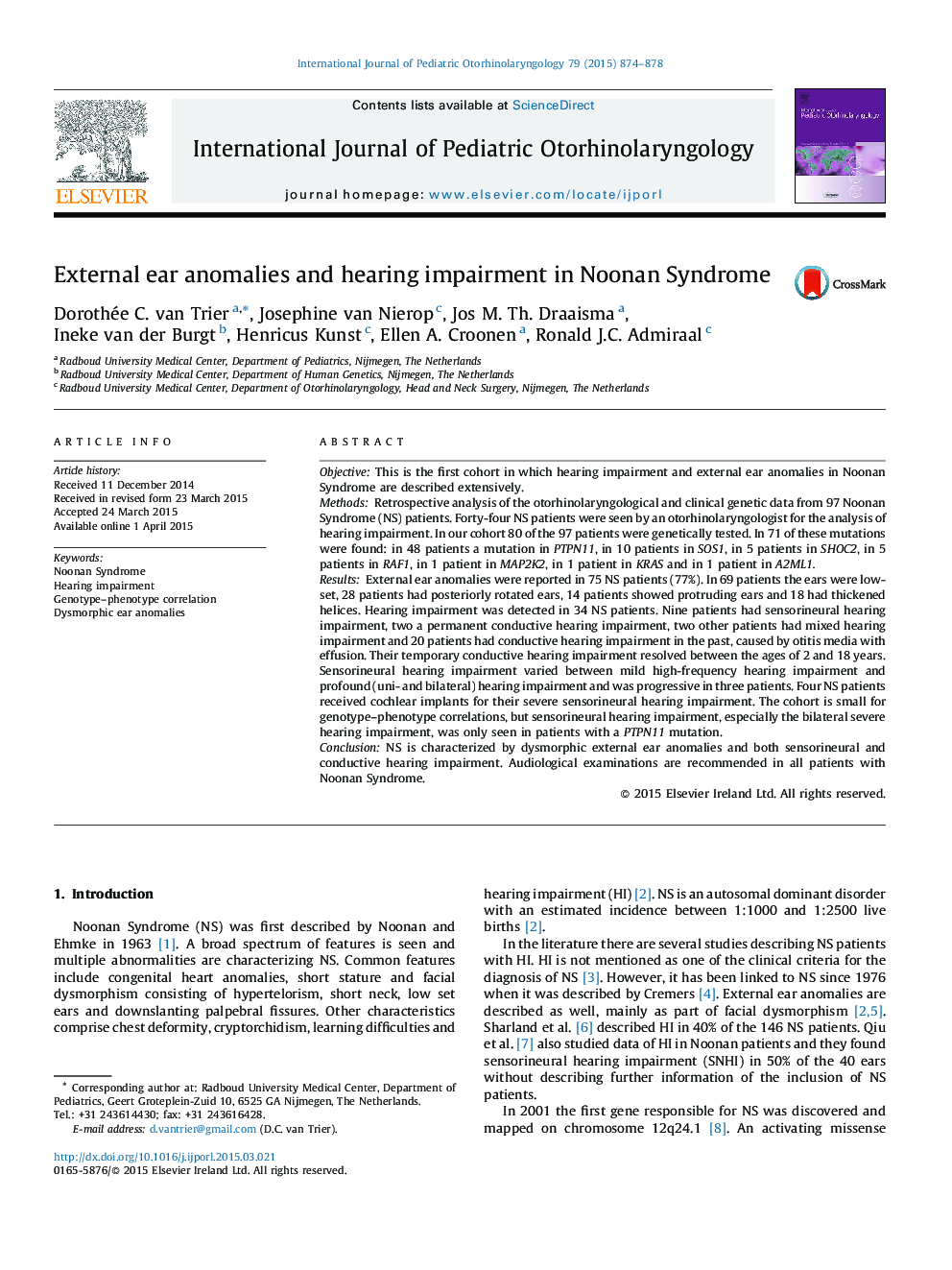| کد مقاله | کد نشریه | سال انتشار | مقاله انگلیسی | نسخه تمام متن |
|---|---|---|---|---|
| 4112365 | 1605995 | 2015 | 5 صفحه PDF | دانلود رایگان |
ObjectiveThis is the first cohort in which hearing impairment and external ear anomalies in Noonan Syndrome are described extensively.MethodsRetrospective analysis of the otorhinolaryngological and clinical genetic data from 97 Noonan Syndrome (NS) patients. Forty-four NS patients were seen by an otorhinolaryngologist for the analysis of hearing impairment. In our cohort 80 of the 97 patients were genetically tested. In 71 of these mutations were found: in 48 patients a mutation in PTPN11, in 10 patients in SOS1, in 5 patients in SHOC2, in 5 patients in RAF1, in 1 patient in MAP2K2, in 1 patient in KRAS and in 1 patient in A2ML1.ResultsExternal ear anomalies were reported in 75 NS patients (77%). In 69 patients the ears were low-set, 28 patients had posteriorly rotated ears, 14 patients showed protruding ears and 18 had thickened helices. Hearing impairment was detected in 34 NS patients. Nine patients had sensorineural hearing impairment, two a permanent conductive hearing impairment, two other patients had mixed hearing impairment and 20 patients had conductive hearing impairment in the past, caused by otitis media with effusion. Their temporary conductive hearing impairment resolved between the ages of 2 and 18 years. Sensorineural hearing impairment varied between mild high-frequency hearing impairment and profound (uni- and bilateral) hearing impairment and was progressive in three patients. Four NS patients received cochlear implants for their severe sensorineural hearing impairment. The cohort is small for genotype–phenotype correlations, but sensorineural hearing impairment, especially the bilateral severe hearing impairment, was only seen in patients with a PTPN11 mutation.ConclusionNS is characterized by dysmorphic external ear anomalies and both sensorineural and conductive hearing impairment. Audiological examinations are recommended in all patients with Noonan Syndrome.
Journal: International Journal of Pediatric Otorhinolaryngology - Volume 79, Issue 6, June 2015, Pages 874–878
